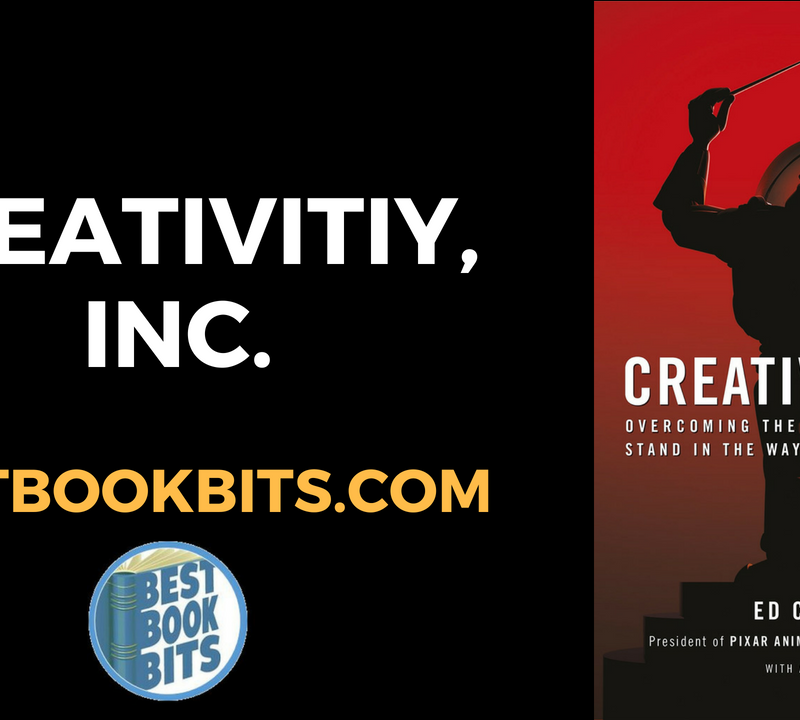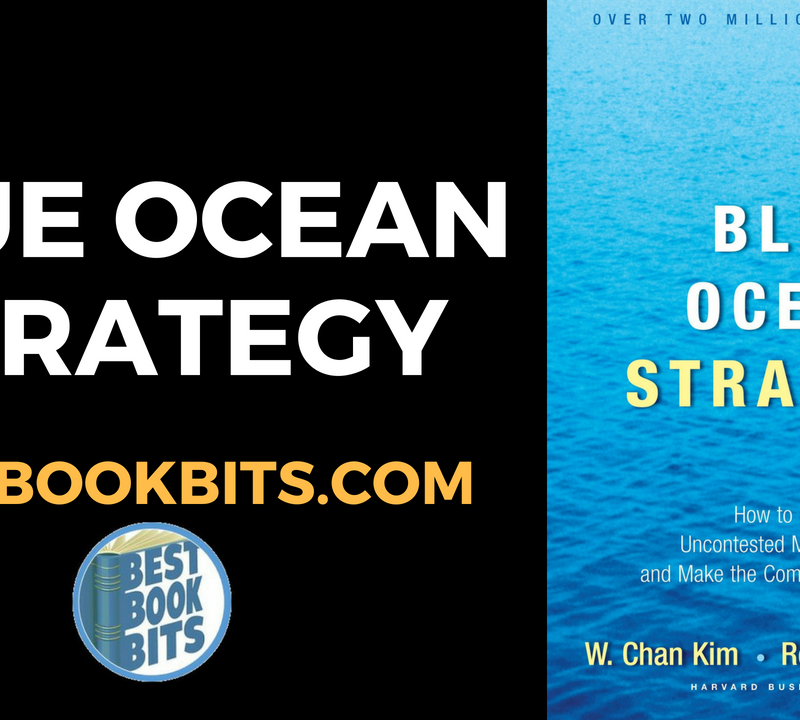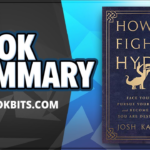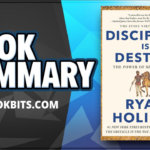★DOWNLOAD THIS FREE PDF SUMMARY HERE
? MY FREE BOOK TO LIVING YOUR DREAM LIFE”
? SPONSOR BESTBOOKBITS BY USING PATREON
? SUPPORT BESTBOOKBITS BY CLICKING THE LINKS BELOW
- 150 PDF Summaries
- Coaching Program
- Subscribe to My Channel
- Website
- Spotify
- Book Club
- Mailing List
Chapter 1: Partnership is the New Leadership
- Over a five-year period I conducted a survey of more than 5,000 leaders. In this survey I asked only one question: As a leader – what do you want from your people? More than 75 percent answered with the one word response of: Commitment.
- People are not committed to jobs and people are not committed to companies. People are ultimately committed to people. It’s relationships that engender trust, respect, accountability and commitment.
- The old adage said leadership is based on title, position or authority. But people don’t follow titles – they follow people.
- Have you ever heard the saying “People join companies but leave bosses?” It’s the leadership they are committed to.
- That’s why in today’s world, partnership is the new leadership.
- The value you provide your people is what earns you the right to be heard and followed, not the title.
- In today’s world, culture ultimately drives business and the leader’s job is to create and maintain that culture.
- I believe what stops most leaders are themselves. We get in our own way.
The 3 Biggest Stumbling Blocks for Leaders are these:
1 Self-interest
- The leader who is willing to place other people’s interests first, to think outward and to serve others is the leader who makes the biggest impact.
- Leaders who want to make an impact have to be willing to give up their self-interest.
2 Ego
- Ego makes a leader un-teachable and unapproachable.
- Overconfidence is the problem of experts and leaders.
- Overconfidence causes us to lose perspective. Humility, the art of being humble, is the anecdote to overconfidence.
3 Apathy
- Leaders can’t be apathetic in their approach and only do what is required.
- John Maxwell perfectly stated, “You can love people without leading them, but you cannot lead them without loving them.
There are three distinct approaches to leadership and each derives a different result.
1 Pretentious leaders create contempt.
- Pretentious leaders are driven by ego. Their focus is not on their people; it’s on them. They choose style over function.
2 Positional leaders create compliance.
- When leaders rely on position or authority they are not truly leading. People don’t follow titles, they follow people.
- Compliance will never take you where commitment can go.
3 Partner leaders create commitment
- Partner leaders understand that influence has to be earned. They build genuine relationships, add value, and join in collaboration with their people.
What is Partnership Based Leadership?
1 Partnership Based Leadership Is The Way You View Your People
- When you see your people as partners and not subordinates it changes your approach to leadership. It’s not about top down directives but rather open conversation and buy-in. Your people feel heard and they feel valued.
2 Partnership Based Leadership Is Built On Relationships
- Partner leaders prioritize people over power.
- Partner leaders prioritize people over programs.
- Partner leaders prioritize people over policy, processes, and procedures.
3 Partnership Based Leadership Is A Balanced Approach
- Leaders need to place their people first.
- Empowering your people, allowing them to grow and succeed, does not make you anything less. In fact, it makes you more as a leader.
4 Partnership Based Leadership Fosters Natural Accountability – The Leader To The People And The People To The Leader
- Leadership is rooted in relationships and when there is a positive relationship, accountability occurs naturally. The leader is accountable to the people and the people are accountable to the leader.
5 Partnership Based Leadership Is Driven By Passion
- Leaders who lack passion will have followers who lack commitment.
- The speed of the leader is the speed of the pack.
- Passion means being willing to suffer for something that you love.
6 Partnership Based Leadership Is Executed With Empathy
- Great leaders understand that they are in the people business.
- Empathy is the ability to mutually experience the thoughts, emotions, and direct experience of others.
- Empathy as a state of mind breeds more listening, more understanding and, therefore, more leadership!
- Partner leadership means empathizing with your people by striving to understand not only where they’re coming from, but also where they’re going.
7 Partnership Based Leadership Creates Transformation
Chapter 2: Partner Leaders Build Genuine Relationships
- Five simple steps to building genuine relationships with your people:
1 Be With Your People
- The Marine Corps calls this “eyeball” leadership, where officers take time to walk in lockstep with those they are training and experience exactly what they are experiencing.
2 Get To Know Your People
- Learn who they are, where they come from, where they want to go, what motivates them. Ask questions and listen.
- Focus on being interested, not interesting
3 Love Your People
- Love for your people is the most important ingredient in the makeup of a leader. When people know that you care, that your concern is genuine, that you truly have their best interests at heart, they will respond with loyalty, trust and commitment.
4 Serve Your People
- Dwight D. Eisenhower once famously said: “You don’t lead by hitting people over the head – that’s assault, not leadership.”
- A soft touch, a willingness to listen and help is much more preferable – and effective.
5 Lead Your People Individually
- You don’t lead a group of people, you lead individual people who make up a group. That is why it is important for leaders to find individual time with their people. Time to have one-on-one conversation. Time to get to know their needs, fears, strengths and goals. Time to understand what drives each individual.
Chapter 3: Partner Leaders Know That Value Precedes Influence
- Value precedes influence. In fact, it is adding value that makes you influential. When you add value to someone’s life, they want more from you. They want you around. They want to do business with you. They buy into you.
- The real Golden Rule of Business is actually: People Do Business With People They Know, Like, Trust &
- The idea that value precedes influence is the opposite mentality of the instant gratification, give-it-to-me-now world.
- Astute leaders understand that learning to focus on contribution and not achievement, on others and not yourself, provides the mindset to know that value precedes influence.
20 Ways Leaders Add Value
- Spend one-on-one time with your people.
- Recognize publicly.
- Compliment others sincerely.
- When mistakes are made be curious, not critical.
- Buy lunch.
- Give credit to the team.
- Allow others opportunities to lead the meeting, give the presentation, take the lead or be in the limelight.
- Know your people’s names, hobbies, likes, etc.
- Constantly be learning.
- Share your knowledge.
- Connect people who could benefit each other.
- Share books/articles that would be beneficial.
- Be caring enough to have candid conversations.
- Ask better questions.
- Write a handwritten note.
- Support someone’s project or initiative.
- Listen more, talk less.
- Reach out just because.
- Go out of your way to promote the agenda of others.
- Remember birthdays.
Three Questions To Ask Yourself
- Brendan Burchard proposed three questions we should ask ourselves.
- Question 1: Is what I am creating/contributing distinct?
- Question 2: Is this my most excellent contribution?
- Question 3: Is there heart in here?
Chapter 4: Partner Leaders Generate Buy-In
- A leader’s vision is what creates buy-in.
- People support what they create.
- Remember that leaders don’t create cultures for people; they create cultures with people.
- “The true price of leadership is the willingness to place the needs of others above your own. Great leaders truly care about those they are privileged to lead and understand that the true cost of the leadership privilege comes at the expense of self-interest … Let us all be the leaders we wish we had.” (Simon Sinek)
- Andrew Carnegie once said, “No man will make a great leader who wants to do it all himself or get all the credit for doing it.”
- Harry S. Truman said, “It is amazing what you can accomplish if you do not care who gets the credit.”
- The Commitment Scale – The Four D’s
- Decision. Discipline. Devotion
- Distraction
- People get distracted. It’s a human thing.
- It’s just easier to seek the path of least resistance.
- Distractions are the comfort zone.
- Leaders understand that distractions are the enemy.
- Decision
- The word “decision” in Latin means to cut off all other options.
- Discipline
- Integrity is following through on a decision long after the emotions felt when making the decision have passed.” I call that discipline.
- Devotion
- The pinnacle of the commitment scale is devotion. Eliminating distractions, making decisions, and exercising diligent discipline are all important steps, but full commitment requires devotion.
- As the great tenor Luciano Pavarotti said, “People think I am disciplined. It’s not discipline. It is devotion. There is a great difference.”
- When you are devoted, you are driven by a cause, you are a person on a mission. You are not just excited about your decision; you are passionate about it. Devotion is felt internally, yet is externally obvious to everyone. Devotion is founded in purpose and without it full and complete commitment is not possible.
★DOWNLOAD THIS FREE PDF SUMMARY HERE
? MY FREE BOOK TO LIVING YOUR DREAM LIFE”
? SPONSOR BESTBOOKBITS BY USING PATREON
? SUPPORT BESTBOOKBITS BY CLICKING THE LINKS BELOW
- 150 PDF Summaries
- Coaching Program
- Subscribe to My Channel
- Website
- Spotify
- Book Club
- Mailing List
Chapter 5: Partner Leaders Master Conversational Leadership
- The ability to effectively communicate opens doors and establishes solid relationships.
- Don’t talk at your people, talk with your people.
- Conversational leadership emphasizes keen attention, self-discipline, and a certain kind of artistry in engaging and communicating with others.
- The Four I’s that make for effective communication: Intimacy, Interactivity, Inclusion, and Intentionality.
- When your people, your partners – feel heard, valued, and appreciated, they will reciprocate by listening and valuing what you share as well.
- Leaders today who choose to communicate conversationally know the importance of the three A’s: Accessibility, Approachability, and Authenticity.
- Communication is an art, and like any great art it requires a delicate balance.
- There are three specific balances
- Care & Candor
- Conversational versus Condescending
- Curious versus Critical
- The word communication comes from the root word common. To truly communicate we need to find what we have in common. When we stand on common ground we are then in position to understand, relate and connect.
- As leaders, two important ways we can find commonality and make strong connections with our people are 1), by not taking ourselves too seriously, and 2), by learning to tell a good story.
- The Power of Laughter
- Laughter is one of the most important parts of life, health, perspective, and leadership.
- Here are 7 Powerful Things That Laughter Does to Make Life Better:
- Laughter dissolves distressing emotions.
- Laughter helps you relax and recharge
- Humour shifts perspective, allowing you to see situations in a more realistic, less threatening light.
- Laughter positively impacts health
- Humour makes friends
- Humour can ease embarrassing situations
- Laughter protects the heart.
- Good humour truly is medicine to the soul
- Story-telling
- Stories are a great way to make a connection. People love stories. People relate to stories. Stories are engaging, not only intellectually but also emotionally. When we hear a good story we automatically make a connection with the storyteller. As leaders we need to learn to tell a good story.
Chapter 6: Partner Leaders Understand That Motivation is Important, But it’s overrated
- Whenever you have a goal there are always two forces to consider: motivating forces that drive us to achieve our goal, and opposing forces, obstacles and inhibitors, that keep us away from our goal.
- Motivation is important, but it’s overrated.
- The old adage said, “Great leaders are great motivators.” In today’s world, “Great leaders know that helping people do their job well is the ultimate motivation.”
Chapter 7: Partner Leaders Recognize That Culture Eats Strategy For Lunch
- Having a great strategy, product or service is no longer a competitive advantage. Everyone is good. That’s the entry fee. So what separates the greats? It’s culture.
- Your culture will be your catalyst to outperform the competition and provide the type of service that creates loyalty.
- The old adage said that leadership is what drove business, but in today’s world, culture drives business.
- Five mistakes that leaders often make that kill culture.
- They are:
- Hire For the Wrong Reasons
- Focus on Tasks and Not Purpose
- Preach Values That You Don’t Live
- Incentivize the Wrong Activities
- Not Investing in Your Culture
Chapter 8: Partner Leaders Create Leaders Not Followers
- Ralph Nader said, “The function of leadership is to produce other leaders, not other followers.”
- Simon Sinek observed, “Great companies and great leaders are ones able to succeed beyond any one leader and manage through the hard times.”
- Individual investment in your people is a must if you want to develop leaders.
- Followers become leaders through mentorship.
- Key steps to empowering your people and building leaders not followers. They are:
- Build relationships with key people
- Raise the vision of your people
- Create systems for anything you will do more than once
- Give them the opportunity to step up
- Mentor individually
- Reinforce We not Me
- The old adage said: “Become a leader that is irreplaceable.” In today’s world: “The real test of leadership is the ability to create leaders, not followers.”
Chapter 9: A Rallying Cry
- The old adage said leadership was based on title, position, and authority, but that’s not true in today’s world. Title does not give you the right to be heard, value does. In today’s world, people don’t want to be talked at, they want to be talked with.
- The ultimate goal of partner leadership is to create more leaders. That is not only what today’s world needs, but also what it demands.
★DOWNLOAD THIS FREE PDF SUMMARY HERE
? MY FREE BOOK TO LIVING YOUR DREAM LIFE”
? SPONSOR BESTBOOKBITS BY USING PATREON
? SUPPORT BESTBOOKBITS BY CLICKING THE LINKS BELOW













